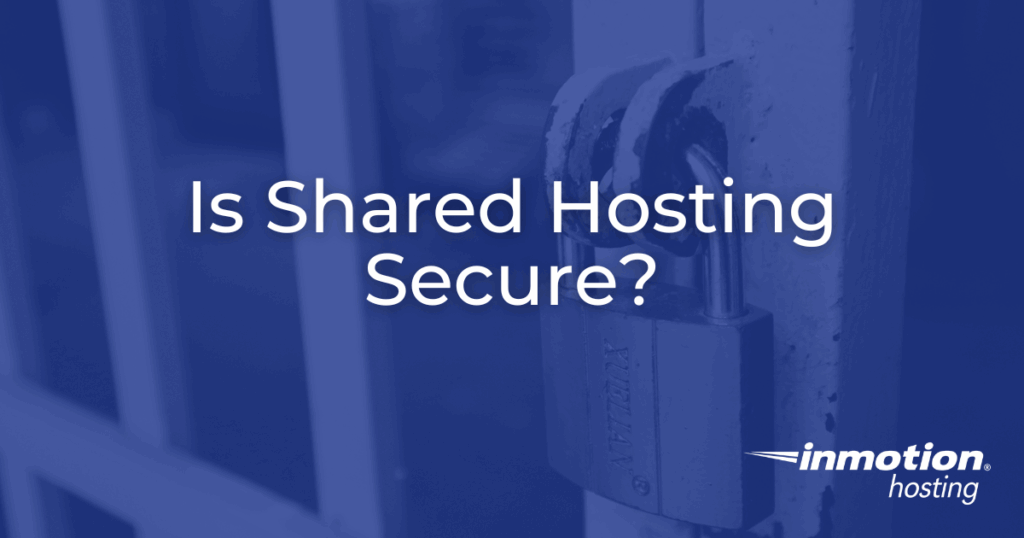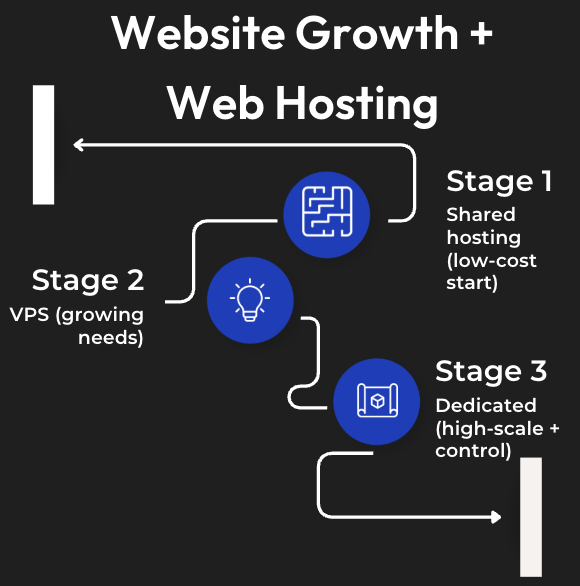
Is Shared Hosting Secure? Deep Guide to Shared Hosting Security

Shared hosting is an easy and accessible choice for small businesses and agencies, but security concerns are common. This article explains how shared hosting works, highlights risks like malware spread and resource abuse, and outlines the protections reliable providers should offer. You’ll also learn common mistakes to avoid, practical security tips, and how shared hosting compares to VPS, dedicated, and cloud options so you can make a confident hosting decision.
If you are a small business owner or an agency managing multiple client sites, shared hosting is often the easiest way to get started. However, a common concern is whether or not shared hosting is secure enough for professional websites.
Security concerns are valid. With multiple customers sharing the same physical server, vulnerabilities can impact more than one account if not properly contained. However, a well-managed shared hosting service, with the right safeguards, can be a reliable and safe option for growing businesses.
In this article, we’ll explore the security of shared hosting, highlight risks, explain protections you should expect, and show how the right hosting provider can keep your site safe.
Understanding Shared Hosting Security
Before diving into risks and protections, it helps to understand the fundamentals of how shared hosting works. Many small business owners know it’s affordable, but they may not fully grasp why it raises security concerns. By reviewing the structure of shared hosting, you’ll see why it’s important to ask the right security questions.
Shared hosting works much like an apartment building. Each account has private space (your files, emails, and website) but shares the same physical server and its resources. While this setup makes hosting affordable and user-friendly, it also raises natural security questions. These could include:
- Account isolation: ‘Can another user’s compromise affect my site?’ Account isolation ensures that if one website on the server is compromised, attackers cannot easily access others. Without this safeguard, your site could be vulnerable through no fault of your own.
- Resource abuse: ‘What if another account consumes too much CPU or RAM?’ If one account is overusing resources, it can slow down the entire server. This makes it critical for providers to monitor and control resource usage fairly.
- Malware spread: ‘How does the provider prevent infected sites from harming others?’ Malware can quickly spread between accounts on the same server if protections aren’t in place. Strong containment tools prevent one infected site from jeopardizing others.
These risks exist, but modern shared hosting has advanced tools to reduce them dramatically.
What to Consider with Shared Hosting
Once you understand the shared hosting model, the risks become clearer. Every shared environment carries potential vulnerabilities, but the severity depends on how the host manages its servers. Knowing what can go wrong prepares you to ask informed questions and choose the right provider.
1. Cross-Account Vulnerabilities
In poorly managed environments, if one site is hacked, attackers may attempt to move laterally to others on the same server. Without proper isolation, this could compromise multiple accounts.
2. Resource Overuse
Because resources are shared, one high-traffic or poorly optimized site could slow down others. This can lead to performance dips and negatively impact the sales of the affected websites.
3. Malware and DDoS Attacks
Malware infections or Distributed Denial of Service (DDoS) attacks can overwhelm servers. A provider without strong defenses risks downtime across all hosted sites.
What Reliable Shared Hosting Security Should Include
After seeing the risks, the next step is to understand which protections need to be in place in order to keep your website safe. Not all hosting providers offer the same safeguards, so it’s important to know the baseline security features you should expect. These features make the difference between a vulnerable website and one that can withstand common threats.
Account Isolation
Technologies like CageFS (isolates individual users from each other) and suPHP (implements owner-permission-only PHP script executions) prevent one compromised account from accessing another. This is the digital equivalent of locked apartment doors in a shared building. Without this, attackers could more easily move across sites hosted on the same server.
Web Application Firewall (WAF)
A WAF blocks common attacks such as SQL (structured query language) injection and cross-site scripting before they reach your website. This reduces the likelihood of exploit attempts succeeding. It acts as a shield between your site and potential bad actors.
Malware Scanning and Protection
Automated malware scanning helps detect suspicious files. Some providers also offer malware removal, ensuring infected files don’t spread. Early detection prevents damage and keeps your website safe for users.
DDoS Mitigation
Distributed denial-of-service attacks can shut down a site by overwhelming servers with fake traffic. Built-in DDoS protection helps filter malicious requests before they cause downtime. This ensures your site remains available even during attempted attacks.
Free SSL Certificates
SSL (Secure Sockets Layer) encryption protects data exchanged between your website and visitors. This is essential not only for security but also for SEO (search engine optimization) and customer trust. Without SSL, browsers may flag your site as unsafe.
Regular Patching and Updates
A secure shared hosting provider keeps servers updated with the latest security patches. This reduces the risk of attackers exploiting known vulnerabilities. Staying up to date is one of the simplest yet most effective security measures.

InMotion Hosting is one example of a provider that includes these protections in its shared hosting plans. From malware defense and DDoS filtering to SSL and account isolation, InMotion Hosting incorporates essential safeguards while also offering 24/7 real human support. This combination of technical measures and expert assistance helps ensure your business website remains both secure and available.
How Shared Hosting Security Compares to Other Hosting Types
Understanding where shared hosting fits into the larger hosting landscape is important for making a choice that feels manageable and future-proof. Every hosting type has trade-offs in terms of security, flexibility, and ease of use. By comparing options, you can see when shared hosting makes sense as a starting point and when it may be time to upgrade.
Shared Hosting vs. VPS Hosting
Shared hosting: Designed to be simple and beginner-friendly, shared hosting removes many of the technical hurdles that come with running a website. The provider manages the environment, so you can launch quickly without needing advanced knowledge. This makes it a natural first step for new site owners or small businesses that value convenience over complexity.
VPS hosting: Offers more control and dedicated resources, which can help reduce risks from neighboring users. However, this flexibility comes with added responsibility. VPS hosting typically requires more technical skills to configure and maintain, making it better suited for growing businesses with in-house expertise or agencies managing multiple sites.
Shared Hosting vs. Dedicated Hosting
Shared hosting: Easy to get started with, shared hosting provides the right balance of features without overwhelming new users. It’s designed for people who want to focus on building their site or brand rather than spending time on server setup and management.
Dedicated hosting: Delivers the highest level of isolation and performance but requires hands-on technical management. While it gives you complete control over your server’s configuration, it also creates a steeper learning curve, which can be a barrier for beginners or small teams.
Shared Hosting vs. Cloud Hosting
Shared hosting: Straightforward and predictable, shared hosting runs on a single server with set resources. Its simplicity means you don’t need to navigate complex scaling models or manage multiple servers. For many small businesses, it’s an easier option that provides all the essentials to get online smoothly.
Cloud hosting: Spreads resources across multiple servers to increase scalability and resilience. While this adaptability is powerful, it can also feel more complicated for new users who just want a stable and easy way to manage their site.
For most small businesses and agencies, shared hosting creates fewer barriers to entry and a smoother path to getting online. As your website grows, you can transition to VPS, dedicated, or cloud solutions for more customization and control. The key is choosing a provider that makes upgrading easy, so you can keep moving forward without disruptions.

Common Shared Hosting Security Mistakes
Even the most secure hosting provider can’t protect against every risk if customers overlook best practices. Many breaches result from preventable errors at the website level. By recognizing these common mistakes, you can avoid leaving your site exposed.
- Neglecting updates: Outdated WordPress plugins or themes are a major attack vector. Hackers frequently target known vulnerabilities in old software. Keeping everything current is one of the easiest ways to stay secure.
- Weak passwords: Easy-to-guess credentials invite brute force attacks. A strong password should include letters, numbers, and special characters. Adding two-factor authentication makes accounts even safer.
- Ignoring backups: Without recent backups, recovery after an incident can be slow. Regular backups allow you to restore your site quickly in case of a hack or error. This simple step can save hours of frustration.
- Skipping SSL: Unencrypted sites not only risk data theft but also damage visitor trust. Many modern browsers flag insecure sites, warning potential customers away. SSL certificates protect both your business and your reputation.
Practical Security Tips for Shared Hosting Users
Learning from mistakes is helpful, but applying proactive strategies makes your website far safer. These practices give you control over your own environment, complementing the protections a secure hosting provider already delivers. With a combination of both, you create an in-depth, robust, and holistic approach to website security.
To keep your website safe on shared hosting:
- Update your CMS, plugins, and themes regularly. Software updates patch vulnerabilities that hackers often exploit. Failing to update these leaves your site open to known attacks.
- Use strong, unique passwords and enable two-factor authentication. Strong credentials are your first line of defense against unauthorized access. Two-factor authentication adds a second layer of protection.
- Install a reputable security plugin for WordPress. Plugins can provide firewall, malware scanning, and login protection features. Choosing a trusted one helps safeguard your site with minimal effort.
- Schedule regular backups and know how to restore them. Having backups means you can recover from an attack or error quickly. Testing your restore process ensures you’re never caught off guard.
- Monitor site activity for suspicious logins or file changes. Early detection of unusual behavior helps prevent larger breaches. Many monitoring tools alert you immediately when something is wrong.
These practices, combined with provider-level protections, ensure a strong security position.
Final Thoughts
After reviewing risks, protections, and best practices, the big question is whether shared hosting is safe for your business. The answer depends on the provider you choose and the steps you take as a website owner. When both sides work together, shared hosting can be a secure, reliable foundation for your online presence.
Shared hosting is secure when paired with the right protections and responsible website management. For small businesses and agencies, it offers the best balance between affordability, ease of use, and built-in security. Choosing a provider that prioritizes malware defense, DDoS mitigation, SSL, and account isolation, supported by a responsive customer service team, makes all the difference.
As your business or client portfolio grows, you can scale from shared hosting to VPS or dedicated solutions without sacrificing security or uptime. That flexibility ensures your hosting solution grows with your ambitions.
Next Steps: Explore hosting providers that offer built-in security features and clear support guarantees, particularly from human support. InMotion Hosting, for example, includes these protections as part of its shared hosting plans, giving businesses confidence that their sites are secure from day one with human support.







